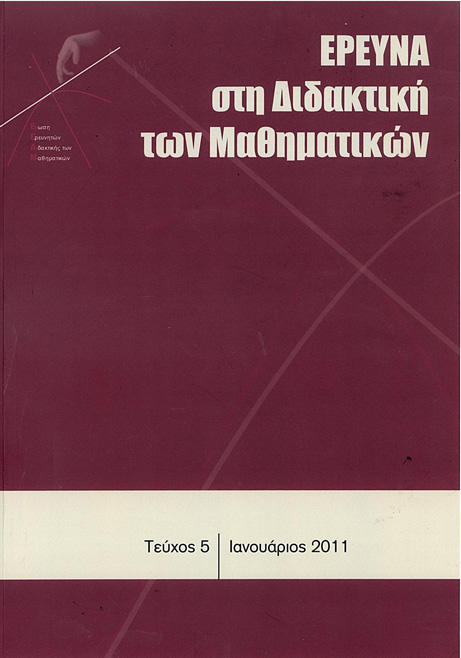Η Έννοια του Γεωμετρικού Στερεού: Ψυχολογική, Επιστημολογική και Διδακτική Προσέγγιση

Περίληψη
Στην παρούσα εργασία επιχειρείται η διαμόρφωση ενός θεωρητικού πλαισίου για την δημιουργία ενός περιβάλλοντος διδασκαλίας και μάθησης των γεωμετρικών εννοιών. Πιο συγκεκριμένα, προτείνεται ότι η διδασκαλία και μάθηση των γεωμετρικών εννοιών θα πρέπει να βασίζεται στην ανάλυση αλλά και σύνθεση τριών βασικών προσεγγίσεων, την ψυχολογική, επιστημολογική και διδακτική. Η ψυχολογική θεώρηση περιλαμβάνει την διερεύνηση των γνωστικών αντιλήψεων των μαθητών σχετικά με την έννοια του γεωμετρικού στερεού. Η επιστημολογική ανάλυση της έννοιας συμβάλει στην διερεύνηση και ανάδειξη των επιμέρους χαρακτηριστικών της συγκεκριμένης έννοιας. Τέλος η διδακτική προσέγγιση θέτει τα απαραίτητα χαρακτηριστικά ενός μαθησιακού περιβάλλοντος. Η σύνθεση των τριών προσεγγίσεων κρίνεται απαραίτητη για την δημιουργία ενός περιβάλλοντος διδασκαλίας και μάθησης της έννοιας του γεωμετρικού στερεού. Η διαμόρφωση λοιπόν του συγκεκριμένου θεωρητικού πλαισίου μελέτης της έννοιας του γεωμετρικού στερεού αποτελεί την βάση ανάπτυξης ενός δυναμικού περιβάλλοντος μάθησης. Τα δεδομένα που παρουσιάζονται στην συγκεκριμένη έρευνα περιορίζονται στην ανάλυση ενός διδακτικού επεισοδίου σε μια Στ΄τάξη Δημοτικού όπου εφαρμόστηκε το δυναμικό περιβάλλον μάθησης που αναπτύχθηκε. Τα αποτελέσματα της ανάλυσης του διδακτικού επεισοδίου φανερώνουν ότι η δημιουργία ενός δυναμικού περιβάλλοντος στη σχολική τάξη συμβάλλει στην ανάπτυξη της γεωμετρικής γνώσης και σκέψης των μαθητών σχετικά με την έννοια του γεωμετρικού στερεού.
Λεπτομέρειες άρθρου
- Πώς να δημιουργήσετε Αναφορές
-
Μαρκόπουλος (Christos Markopoulos) Χ. (2017). Η Έννοια του Γεωμετρικού Στερεού: Ψυχολογική, Επιστημολογική και Διδακτική Προσέγγιση. Έρευνα στη Διδακτική των Μαθηματικών, (5), 41–66. https://doi.org/10.12681/enedim.15029
- Ενότητα
- Άρθρα

Αυτή η εργασία είναι αδειοδοτημένη υπό το CC Αναφορά Δημιουργού 4.0.
Οι συγγραφείς των άρθρων που δημοσιεύονται στο περιοδικό διατηρούν τα δικαιώματα πνευματικής ιδιοκτησίας επί των άρθρων τους, δίνοντας στο περιοδικό το δικαίωμα της πρώτης δημοσίευσης. Άρθρα που δημοσιεύονται στο περιοδικό διατίθενται με άδεια Creative Commons BY και σύμφωνα με την άδεια μπορούν να χρησιμοποιούνται ελεύθερα, με αναφορά στο/στη συγγραφέα και στην πρώτη δημοσίευση.

